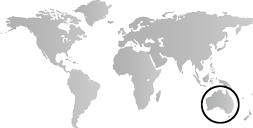Although the first British settlement is established in 1788, at the beginning of the nineteenth century the immense continent of Australia still remains almost completely unknown. During the 1800s, Europeans explore and settle what is, to them, a new land. They establish cities and towns, primarily on the relatively well watered eastern and southwestern coasts, as well as vast pastoral stations (ranches) for sheep and cattle in the remote and more arid interior, familiarly known as the “outback.” The European colonization of Australia leads to the often violent dispossession of the continent’s Aboriginal peoples from their homelands. It also leads to increasing European encounters with, and collection of, Aboriginal art. While late eighteenth-century settlers in the Sydney area had noted the presence of Aboriginal rock engravings, the explorations of the nineteenth century offer Europeans the first tantalizing glimpses of the richness and diversity of the rock art traditions of Arnhem Land, Queensland, the Central Desert, and the Kimberley. The century also sees the founding of most of Australia’s major museums and universities and the formation of the first substantial collections of Aboriginal art and artifacts, both within the country and abroad.
Throughout the 1800s, the artistic achievements of Aboriginal Australians remain largely unknown and unappreciated. The most spectacular rock art sites lie in remote locations seldom visited by Europeans. As nomadic peoples, who move from camp to camp within well-defined home territories, Aboriginals primarily produce easily portable utilitarian objects, though some of these objects are intricately decorated. As a result, some social theorists go so far as to assert that the Aborigines are a people without art. It is only toward the close of the century that Westerners begin to recognize the true breadth and diversity of Aboriginal artistic achievement.


